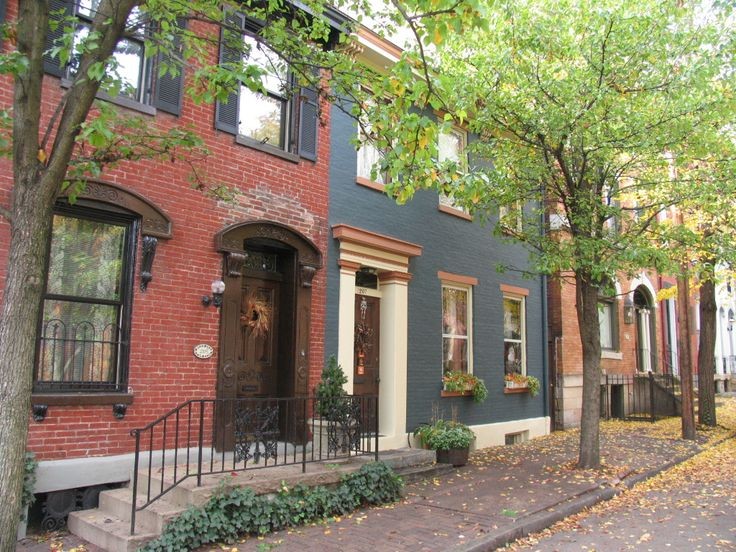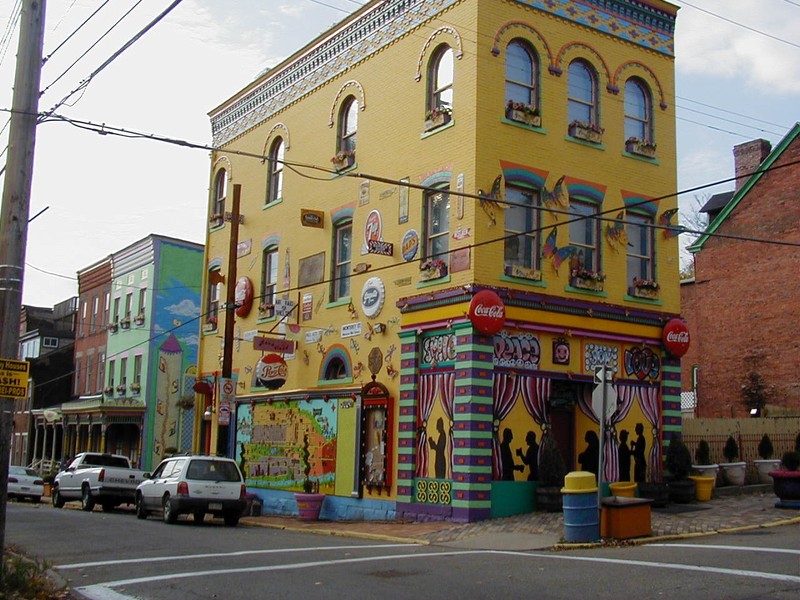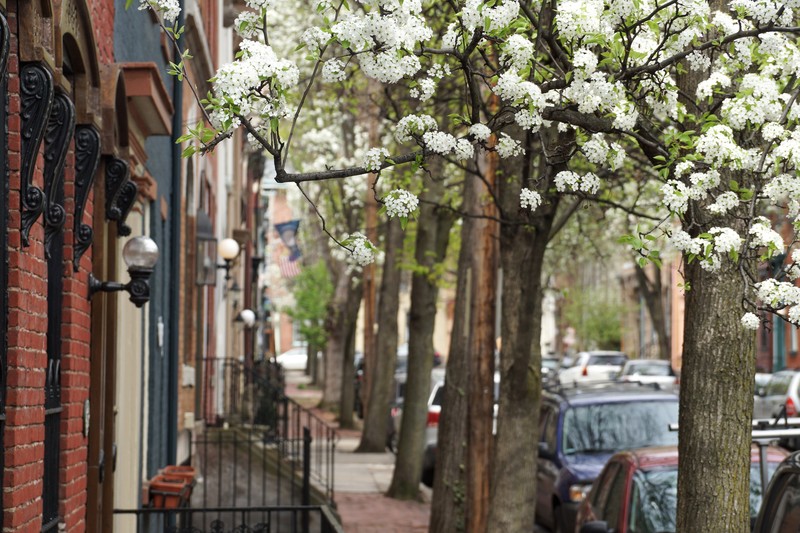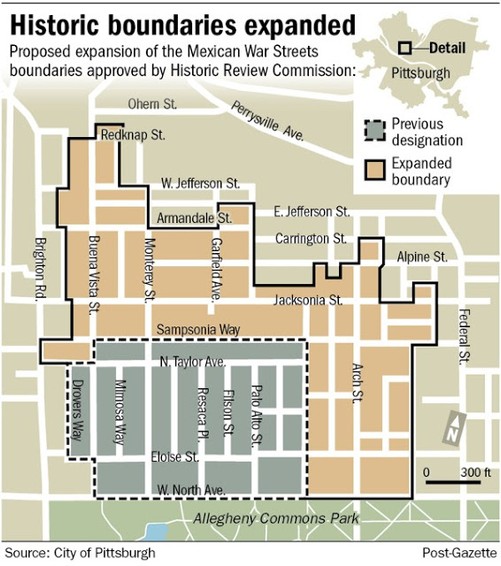Mexican War Streets Historic District
Introduction
Text-to-speech Audio
Images
Row houses within the Mexican War Streets.

A uniquely decorated business in the district.

Trees in bloom along a street in the district.

A map showing the district's boundaries.

Backstory and Context
Text-to-speech Audio
Now, mostly comprised of restored row houses, neighborhood and private gardens and tree-lined streets and alleys, the Mexican War Streets were originally laid out by Alexander Hays between 1848 and 1855. The land was located in what was the town of Allegheny, just across the Allegheny River from Pittsburgh, and was owned by the man who served as the town’s first mayor, General William Robinson. It was Robinson who named many of the streets after battles and generals from the Mexican War, such as Palo Alto, Buena Vista, Resaca, Taylor and Sherman.
Because the area built up over a long period of time, the architecture varies from Greek Revival, to Italianate, to Romanesque, but most of the homes were 2-3 bay, 2-4 story residences. By the 1880s, the population of Allegheny was over 75,000 and most of the Mexican War Streets were built up with residences and shops owned by the areas numerous immigrants. Many of these shops also served as the owner’s residence and included grocery stores, bakeries, beer gardens, and tobacco and barber shops.
However, by the 1920s and 30s the original inhabitants left the area and it suffered through a long period of neglect. Finally, in 1966, the Pittsburgh History and Landmarks Foundation stepped in, secured grants, purchased many of the properties and began the long process of restoration. Their efforts were largely successful as the area is now a thriving, diverse neighborhood that now attracts renters, home owners and tourists to this historic district.
Sources
Johnson, Paul. "Our Neighborhood: History." Mexican War Streets Society. 2015. Accessed December 15, 2016. http://www.mexicanwarstreets.org/history/
Nelson-Jones, Diana. "Expansion of the Mexican War Streets historical district approved." Pittsburgh Post-Gazette. December 6, 2012. Accessed December 15, 2016. http://www.post-gazette.com/local/city/2012/12/06/Expansion-of-Mexican-War-Streets-historic-district...
"The Mexican War Streets: Third in a Series of PHLF's Greatest Saves in 50 Years." Pittsburgh History and Landmarks Foundation. April 29, 2015. Accessed December 15, 2016. http://phlf.org/2015/04/29/the-mexican-war-streets-third-in-a-series-of-phlfs-greatest-saves-in-50-y...
